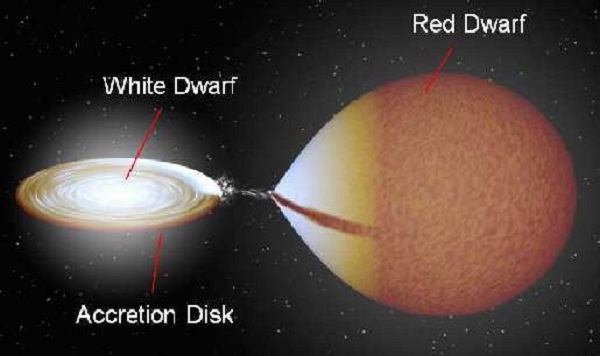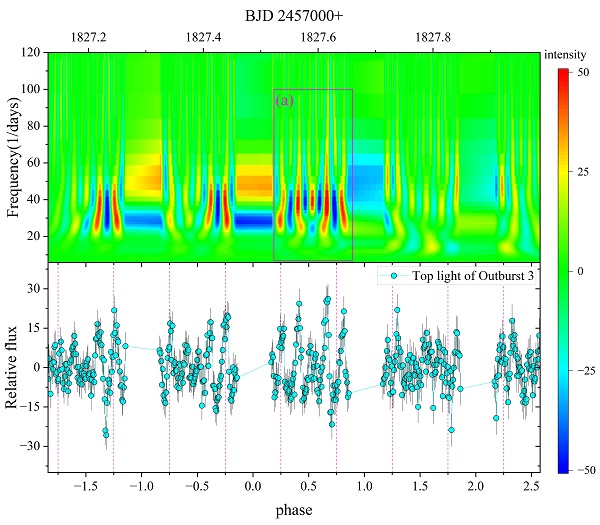Recently, SUN Qibin, a Ph.D. student in the Binary and Variable Star Research Group at the Yunnan Observatories of the Chinese Academy of Sciences, and his supervisor Prof. QIAN Shengbang have made new progress in the quasi-periodic oscillations (QPOs) of cataclysmic variable stars. Using the TESS survey data, the QPOs with a period of about 2,160 s were first found during the outburst of the long-period dwarf nova HS 2325+8205, and the intensity of the QPOs was found to be related to the orbital phase. The discovery of the correlation between the orbital phase and the intensity of QPOs provides a new way to study the origin of QPOs in cataclysmic variable stars. This result was published online on December 5 in the international astronomical journal Monthly Notices of the Royal Astronomical Society.
Dwarf novae are a subtype of cataclysmic variable stars, the semi-detached close binary, consisting of a “non-magnetic” (B surface < 10 6 G) white dwarf which accretes matter from a lower main-sequence companion. The material from the secondary star with angular momentum forms an accretion disk around the white dwarf and collides with the accretion disk to form hot spots of high brightness and temperature (see Figure 1). Dwarf nova exhibit intermittent outbursts, with the luminosity of the system increasing by about 2-8 magnitudes over days to weeks, with outbursts lasting from a few days to tens of days and recurrence times ranging from days to years. In addition to outbursts, it is generally accepted that dwarf novae have three types of rapid oscillations dwarf novae oscillations (DNOs), long-period DNe oscillations (lp-DNOs), and quasi-periodic oscillations (QPOs). The time scale ranges from a few seconds to thousands of seconds. The period of quasi-periodic oscillation is longer than that of DNOs, ranging from hundreds to thousands of seconds. The origin of QPOs is closely related to the accretion disk, but the exact physical process of the origin of QPOs is still controversial. QPOs are an essential property of cataclysmic variable stars, and studying the origin of QPOs is vital to improve the evolutionary model of the accretion disk.
Based on the TESS photometry, the Lomb-scargle periodogram (LSP ), and Continuous Wavelet Transform (CWT ) methods, this work finds for the first time the existence of ~2160s of QPOs during the long outburst of HS 2325+8205, which is consistent with the current research theories. A strong correlation can be found by comparing the oscillations and orbital phases of the QPOs, with the intensity of the oscillations being more robust in the 0.5-0.9 phase than in the 0.1-0.5 phase (see Fig. 2). This work excludes the effect of irradiation and elliptical modulation of secondary stars but questions the effect of hot spots on the intensity of QPOs, which were previously excluded from the origin of QPOs. In addition, the work finds a distinct double-humps phenomenon in HS 2325+8205, with three different types of outbursts and an outburst period of about 13.83 days.
The Key Project of the National Natural Science Foundation of China supported this work.
Contact:
SUN Qibin
Yunnan Observatories, CAS
Email: sunqibin@ynao.ac.cn

Figure 1:The basic structure of the cataclysmic variable star. The diagram was produced by Rob Hynes (see http://www.phys.lsu.edu/~rih/binsim).

Figure 2: CWT 2D power spectrum of the top curve of outburst 3 and its corresponding light curve. The selected part of the rectangular box is where the intensity of QPOs is greatest.